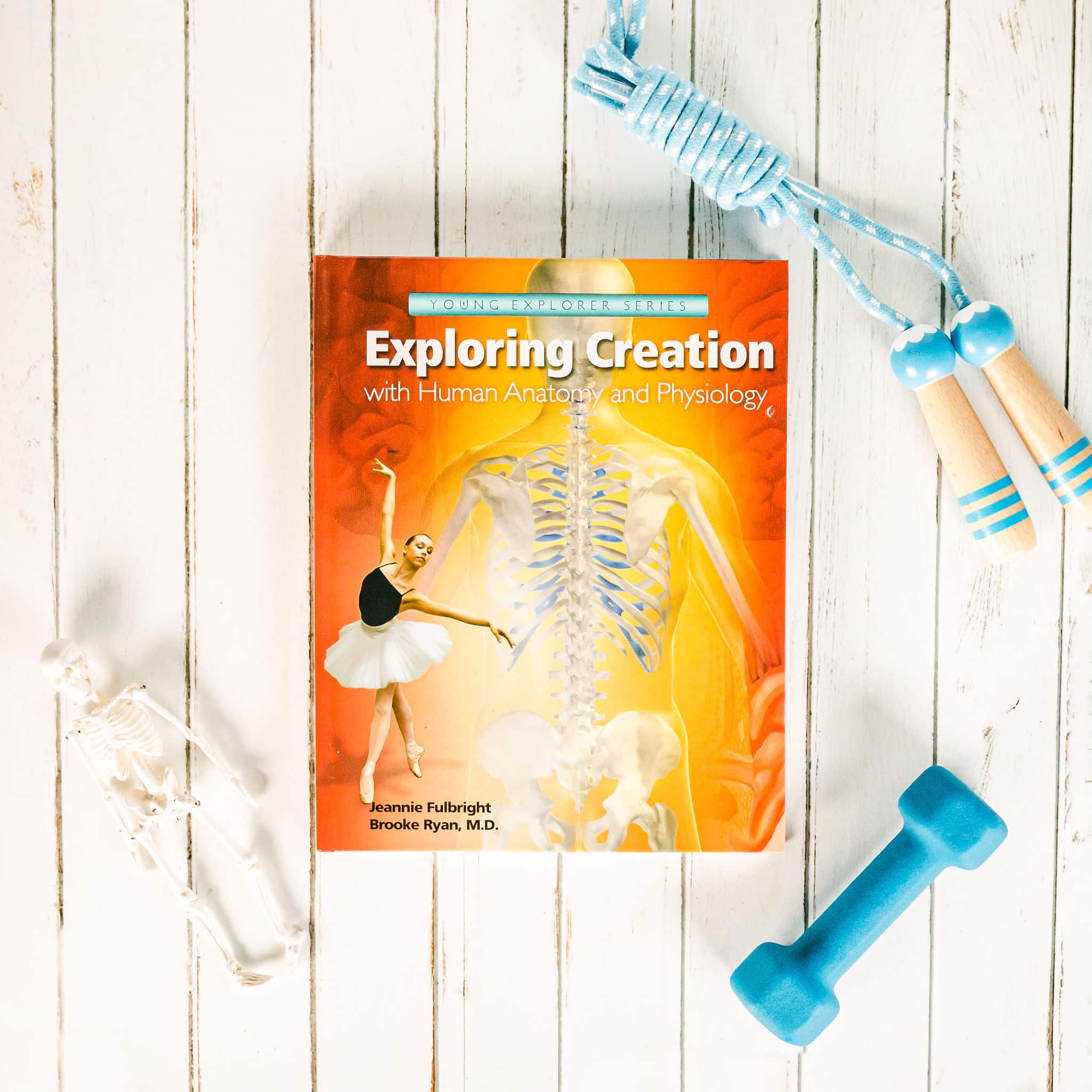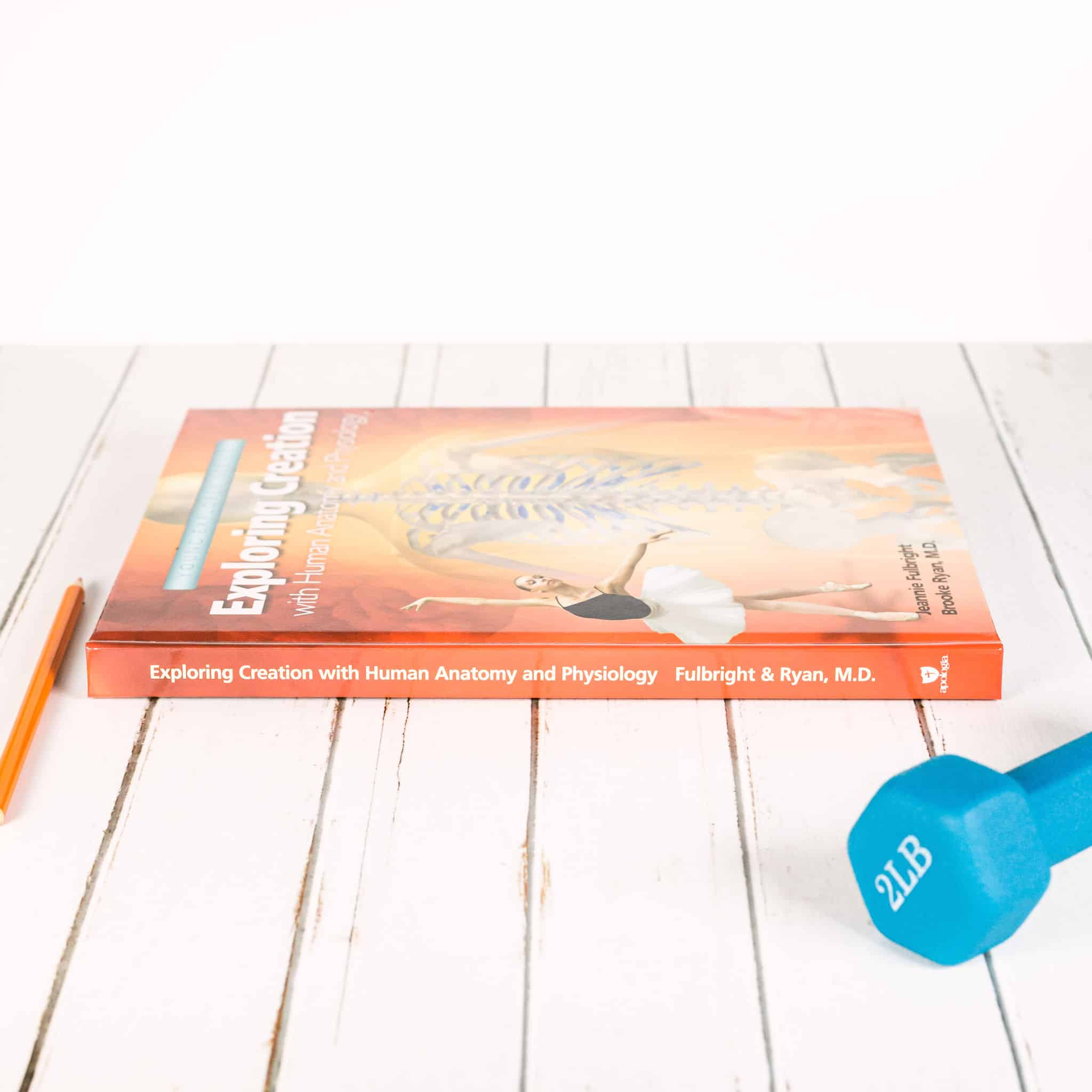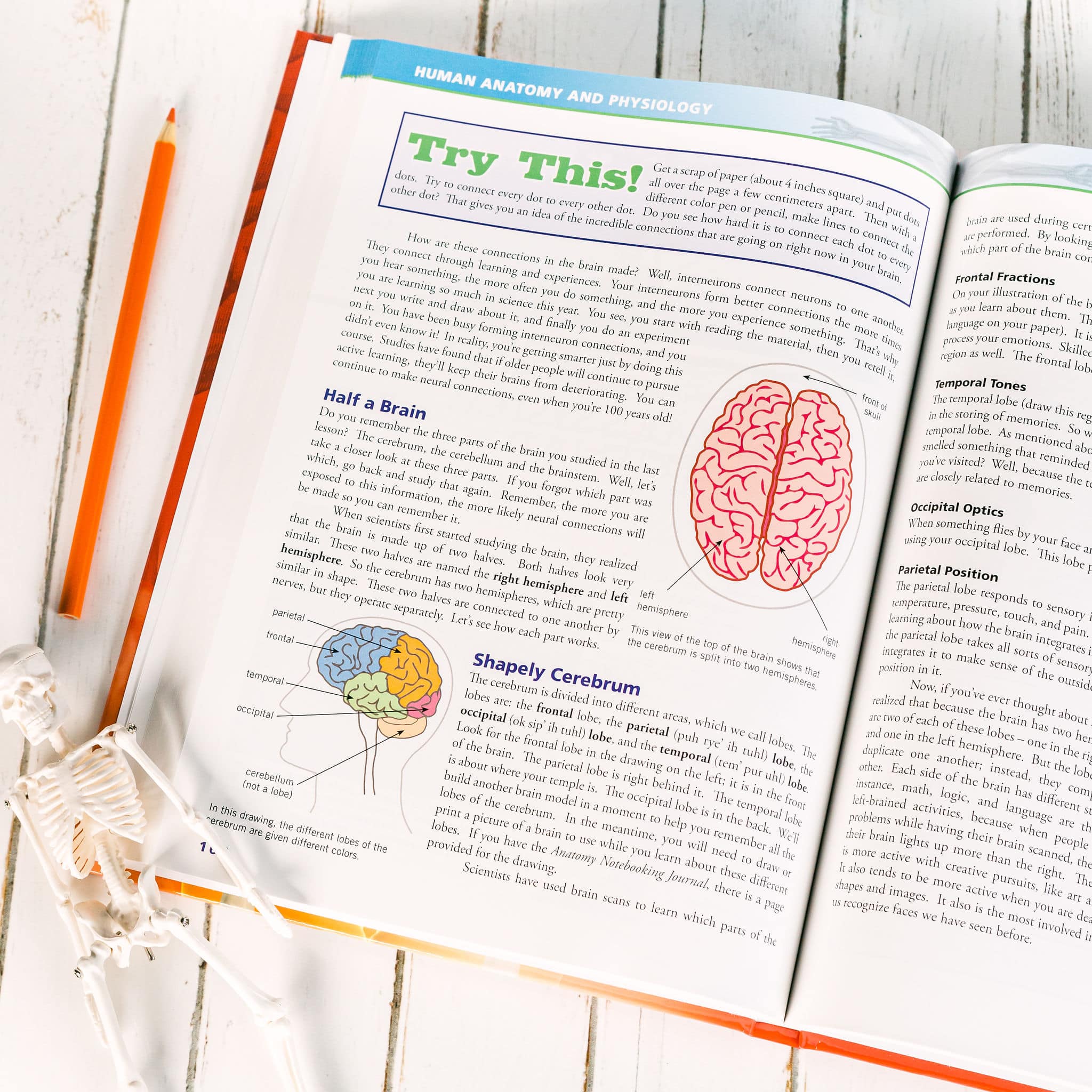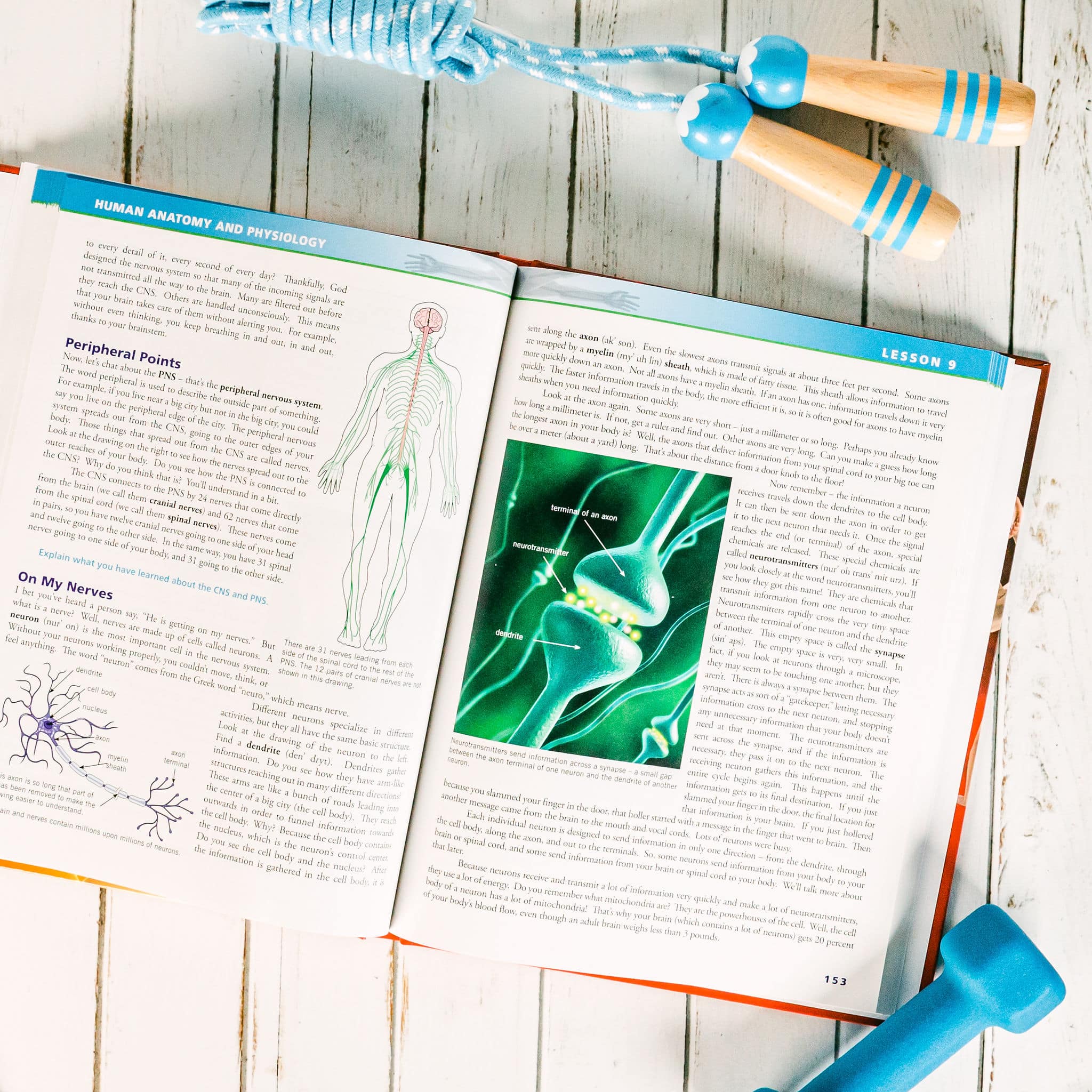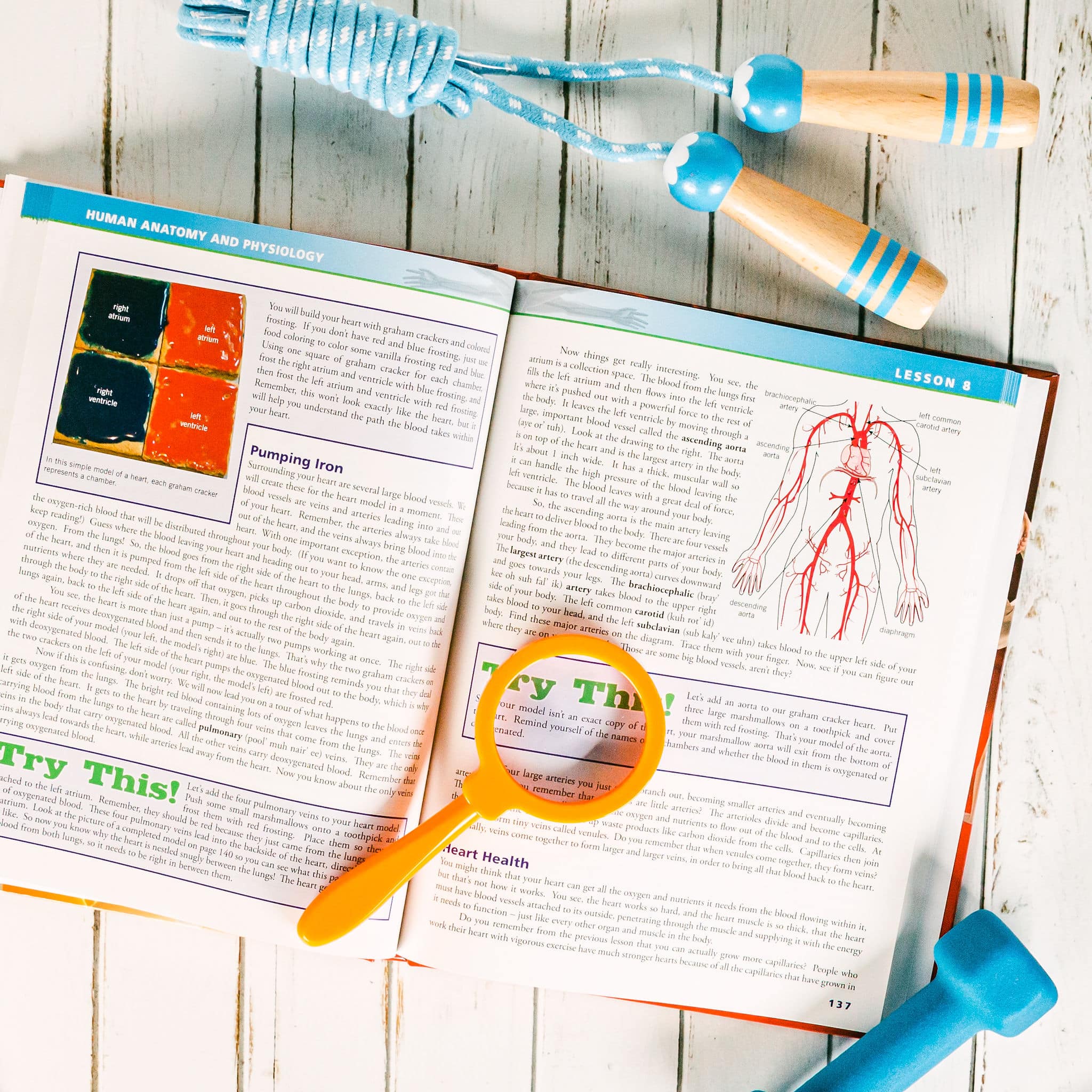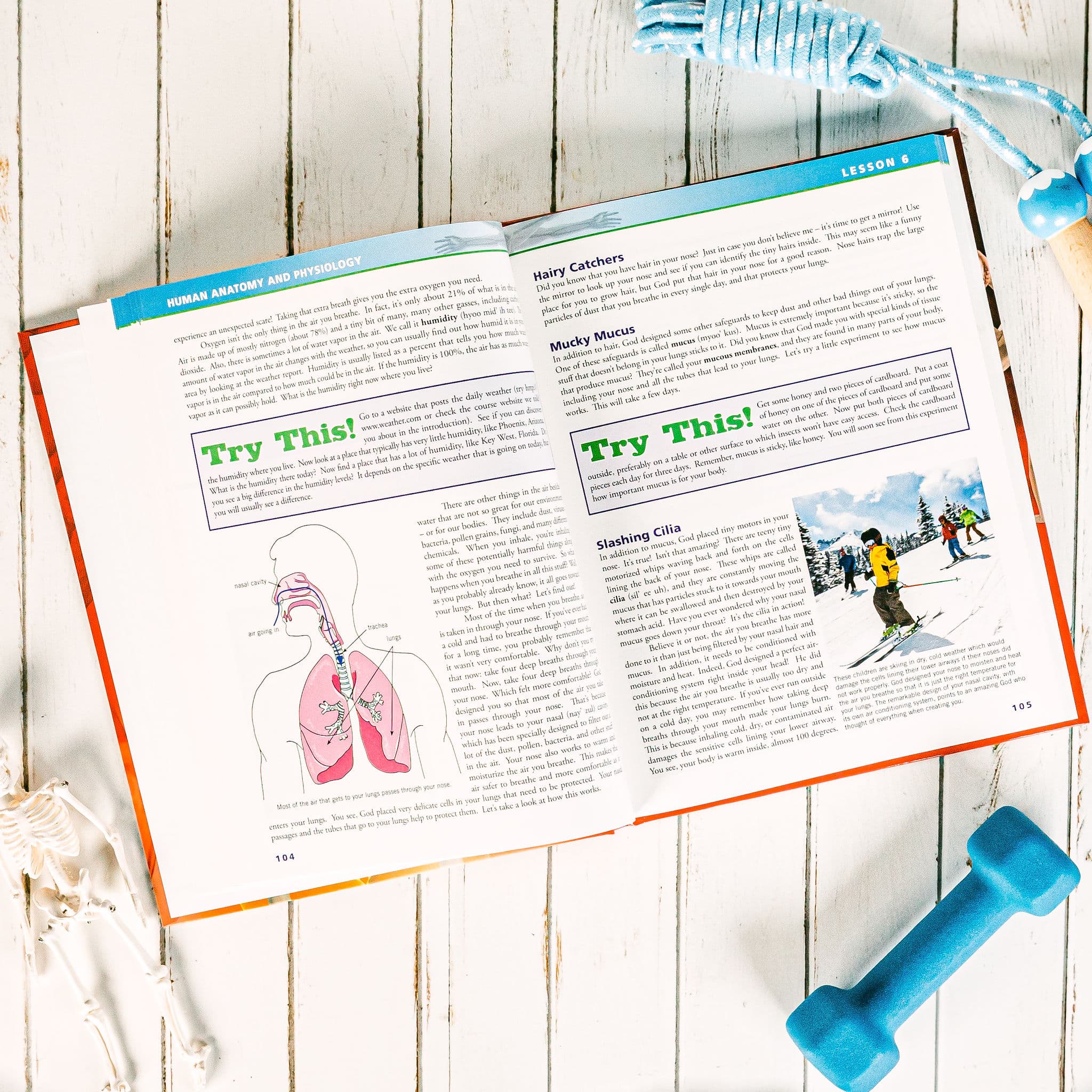Description
Exploring Creation with Human Anatomy and Physiology is a homeschool science curriculum for elementary students. In this course, your students will do a deep dive into the unique design of their own body–both inside and out–and how they can keep it working well! They’ll also explore a range of topics, such as human DNA, cell anatomy, and body systems, through the curriculum filled with vivid graphics, interactive lessons, and hands-on projects.
This anatomy book highlights the connection between science and the wonder of God’s creation. Students will discover how the intricate design of the human body reflects the Creator’s wisdom and care, fostering a deeper appreciation for their own unique design. Through interactive activities, lessons, and hands-on projects, this faith-based anatomy book inspires curiosity and a lifelong desire to marvel at the complexity of God’s work in human anatomy and physiology.
Curriculum Overview
We believe your child’s education is at its best when their learning begins with curiosity. That’s why this course was designed for elementary students with no prerequisite. We use the practical concepts and things in their world to help them learn and experience that science isn’t just a class–it’s a means for them to discover their world!
Apologia’s Exploring Creation with Human Anatomy and Physiology course takes an academic and practical approach to teaching your students about the human body. As they engage with the lessons, projects, and experiments, your student will better understand the complexity and purposes of the human body’s design and how best to care for their own body.
This course begins with a brief history of medicine and then gives your student a peek into cells and DNA. Through vivid graphics and hands-on activities featured in the anatomy and physiology textbook, your student will study and explore various body systems, nutrition, and health, how God designed their immune system to protect them, and what makes them a unique creation of God.
As they work their way through the course, your student will enjoy creating their personalized human figure and adding to it as they learn about each of the body’s organs. They will also enjoy conducting scientific experiments and projects, such as testing the bacteria content around the house, finding their blood type, creating a cell model from Jello and candy, and even building a stethoscope!
Human Anatomy and Physiology: Lesson Plans & Teaching Materials
There are 14 lessons in this one-year Human Anatomy and Physiology course. Detailed lesson plans and a suggested daily schedule are included in the student notebooking journal (sold separately). This will set you and your student up for success as they work through the course while also providing flexibility to meet the needs of your student and your family.
The human anatomy textbook is packed with vivid photos and various hands-on activities and experiments that bring Human Anatomy and Physiology to life. The human anatomy and physiology textbook and the notebooking journal team up to provide engaging hands-on activities to help them solidify the concepts they are learning. The hard-cover textbook and notebooking journal are recommended for your student to make the most of this course.
All the activities and experiments in the anatomy and physiology textbook use easy-to-obtain household items and truly make the lessons come alive!
This course covers the following lessons:
- The history of anatomy and physiology
- Cell anatomy, Cell membrane
- Mitochondria, Centrioles, Golgi
- The nucleus
- Cell creation
- DNA and RNA
- The Skeletal System
- The Muscular System
- The Digestive and Renal System
- Health and Nutrition
- The Respiratory System
- Blood
- The Cardiovascular System
- The Nervous System
- The Endocrine System
- The Senses
- The Integumentary System
- The Lymphatic and Immune Systems
- Growth and Development
- And much more!
Hands-on Activities and Experiments
Some of the activities and experiments your student will complete in the anatomy and physiology course include making an edible model of a cell, analyzing a chicken bone, studying muscle fibers, the growing muscle experiment, designing a digestion theme park activity, testing starch content in food, and making a diaphragm model to better understand how the breathing process works.
All activities and projects in this course use easy-to-find household items and truly make the lessons fun!
Meet the Author



